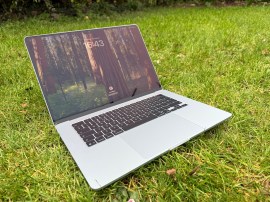Apple Watch Series 7 vs Apple Watch Series 6: what’s the difference?
How to tell the two tickers apart
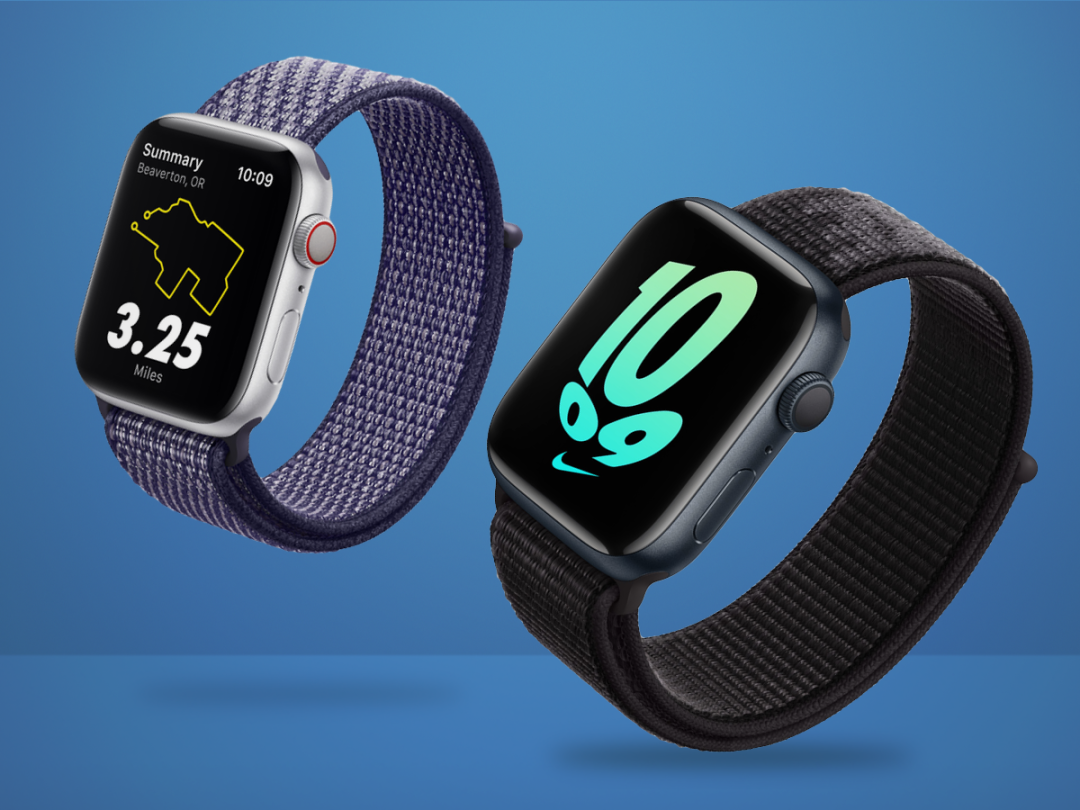
Right on time, Apple announced a fresh addition to its smartwatch family last year.
So what’s different with the Apple Watch Series 7? At first glance, not too much. Not the overhaul many were hoping for, the latest Cupertino ticker instead delivers a catalogue of tweaks and improvements, led by a bigger display.
But are the changes enough to justify an upgrade from the Apple Watch Series 6? Whether you’re considering an upgrade or wondering whether to wait before buying your first Apple Watch, we’ve done a deep dive to compare the two – and determine whether it’s worth switching up your wristwear.
Design & display: face filler
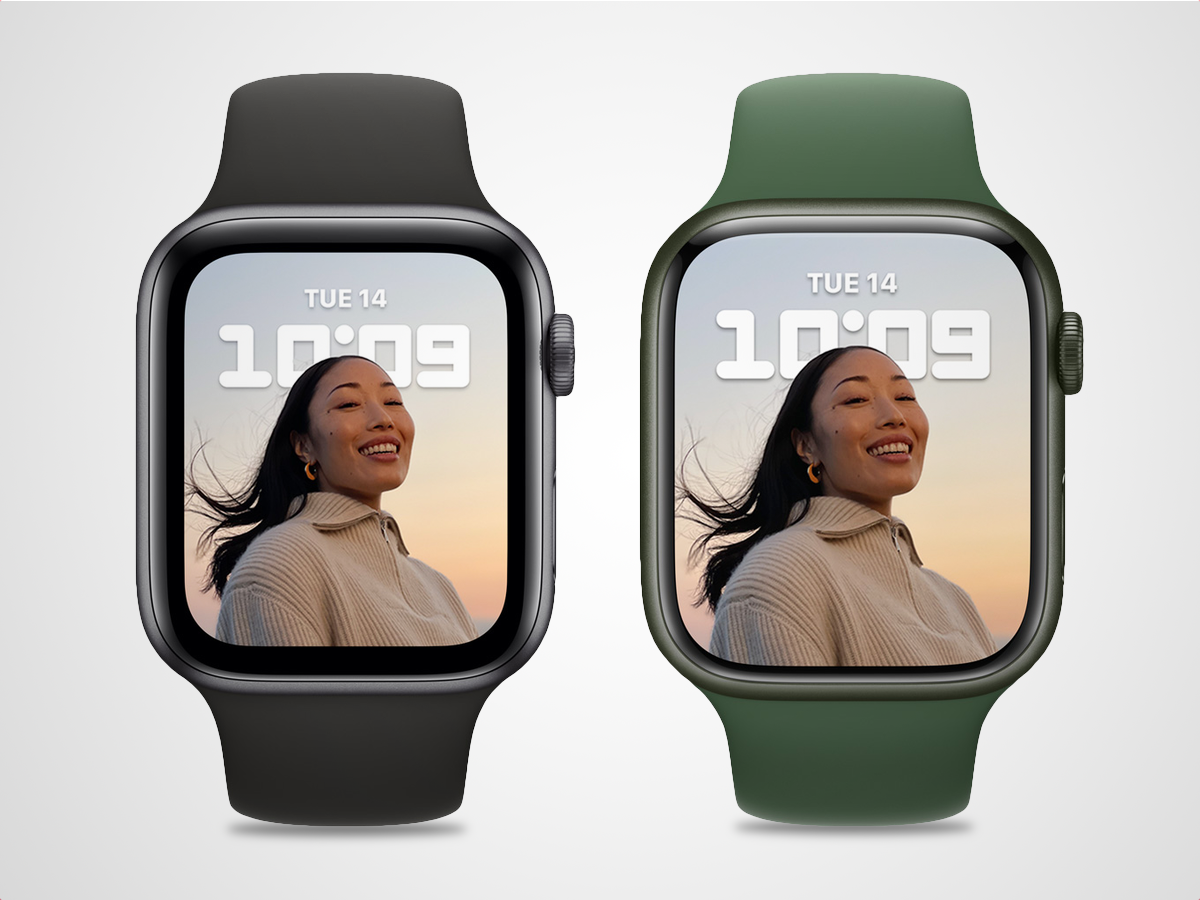
For all the clock-watching and conjecture, Apple didn’t deliver a rumoured redesign with its latest ticker. So there’s no flat-panel aluminium to match its iPhone, iPad and iMac stablemates. Instead, the Series 7 sticks with the proven formula of its predecessors: a square facade with rounded corners, plus a sleek case with curves in all the right places. And like the Series 6, it’s set to ship in titanium, stainless steel or 100% recycled aluminium.
But Apple has introduced a few key tweaks for the Watch Series 7. Most noticeable is the upgraded display: the screen is nearly 20% bigger by area than the one on the front of the Series 6. Yet at 41mm and 45mm, the case dimensions are only ever so slightly larger than on the equivalent versions of the Series 6 (40mm and 44mm respectively).
The trick to this streamlined expansion? Behind the scenes, Apple managed to integrate the touch sensor into the OLED panel. This results in a slimmer, single screen component, allowing the border around the display to shrink by a substantial 40%.
And because of that extra space, the front crystal is more than 50% thicker. Together with a revised glass profile that’s more resistant to cracks (and makes the screen appear as if it wraps around the edges), this makes the Series 7 the most durable Apple Watch to date. Plus IP6X dust-resistance means its body is beach ready.
As for the always-on Retina display itself, it’s now 70% brighter indoors, while Apple reckons you can fit up to 50% more text on screen – although the truth of that claim will depend on your font size settings.
Performance & battery life: quicker kips
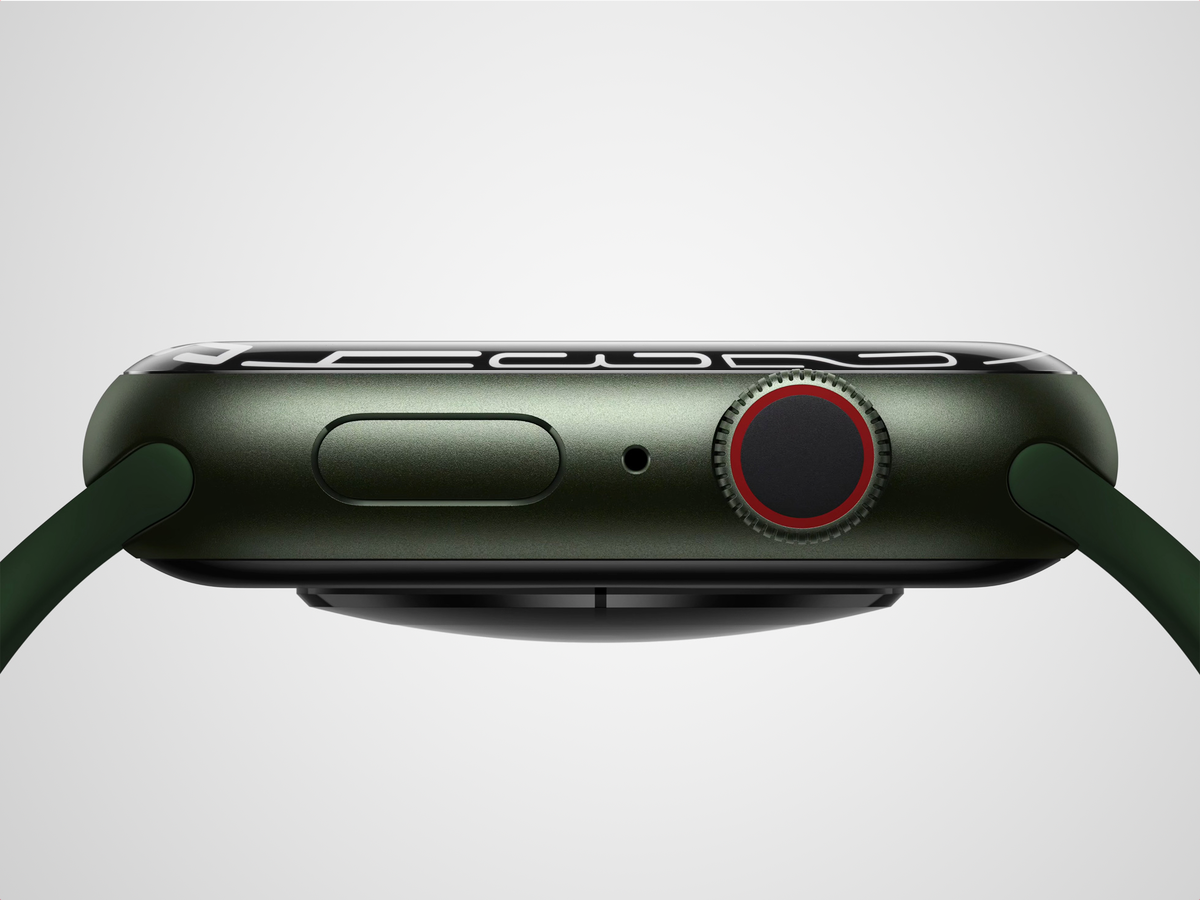
Bad news for regular wearers: Apple hasn’t boosted battery life for the Watch Series 7. So you get the same 18-hour span as with the Series 6. While this is more than enough to get you through a normal day, it’s still some way shy of the multi-day longevity offered by its more sporting rivals.
And while Apple is famously coy about publishing the raw specs for its devices, that 18-hour estimate suggests it may have a smaller cell than the 361mAh number found in the largest Samsung Galaxy Watch 4.
What has changed with the Series 7 is charging speed. Courtesy of a new ‘charging architecture’ and Magnetic Fast Charger, Apple clocks it at 33% faster than the Series 6. So while you’ll still need to top up your Watch on the regular, it should be off your wrist for less time. Given that it took around 90 minutes to brim the Series 6, we’d expect the Series 7 to be full in just over an hour – handy if you need to boost it before bed for a night of sleep tracking.
As for performance, Apple hasn’t mentioned anything in the way of processor enhancements – suggesting that the same (or a very similar) 64-bit dual-core S6 chip still sits at the heart of the Watch. And that’s no bad thing: the Apple Watch Series 6 was hardly sluggish, zipping through apps without noticeable lag.
Software: size up
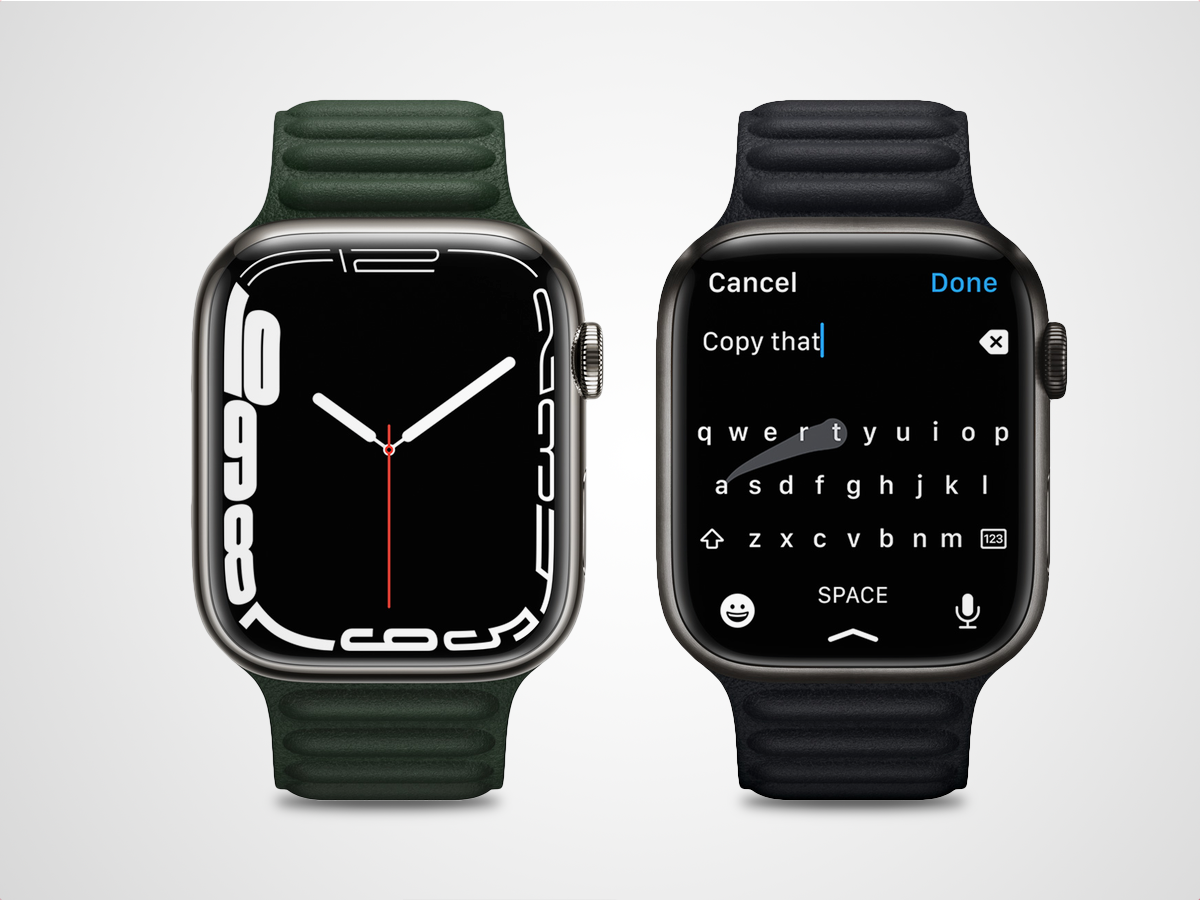
Some of the biggest changes with the Apple Watch Series 7 come courtesy of its software. While watchOS 8 will be supported by devices all the way back to the Series 3, several of its features are optimised for the larger display of the Series 7.
Wearers of the Series 7 will get fresh faces which fill the bigger screen, including a Contour face that wraps the dial around the frame, as well as a Modular Duo frontage which makes use of the extra space to display a pair of complications.
The user interface is similarly optimised: the Apple Watch Series 7 features two larger font sizes than the Series 6, while a new keyboard supports QuickPath swipe inputs – so no more tapping tiny keys with your fat fingers in third-party apps. And machine learning smarts are on-hand to anticipate your word choice for quicker messaging.
Menu titles and buttons are also bigger, so you should have less trouble jabbing around to silence your morning alarm – plus the bigger screen should make it easier to draw individual letters using Scribble.
Health features: familiar territory
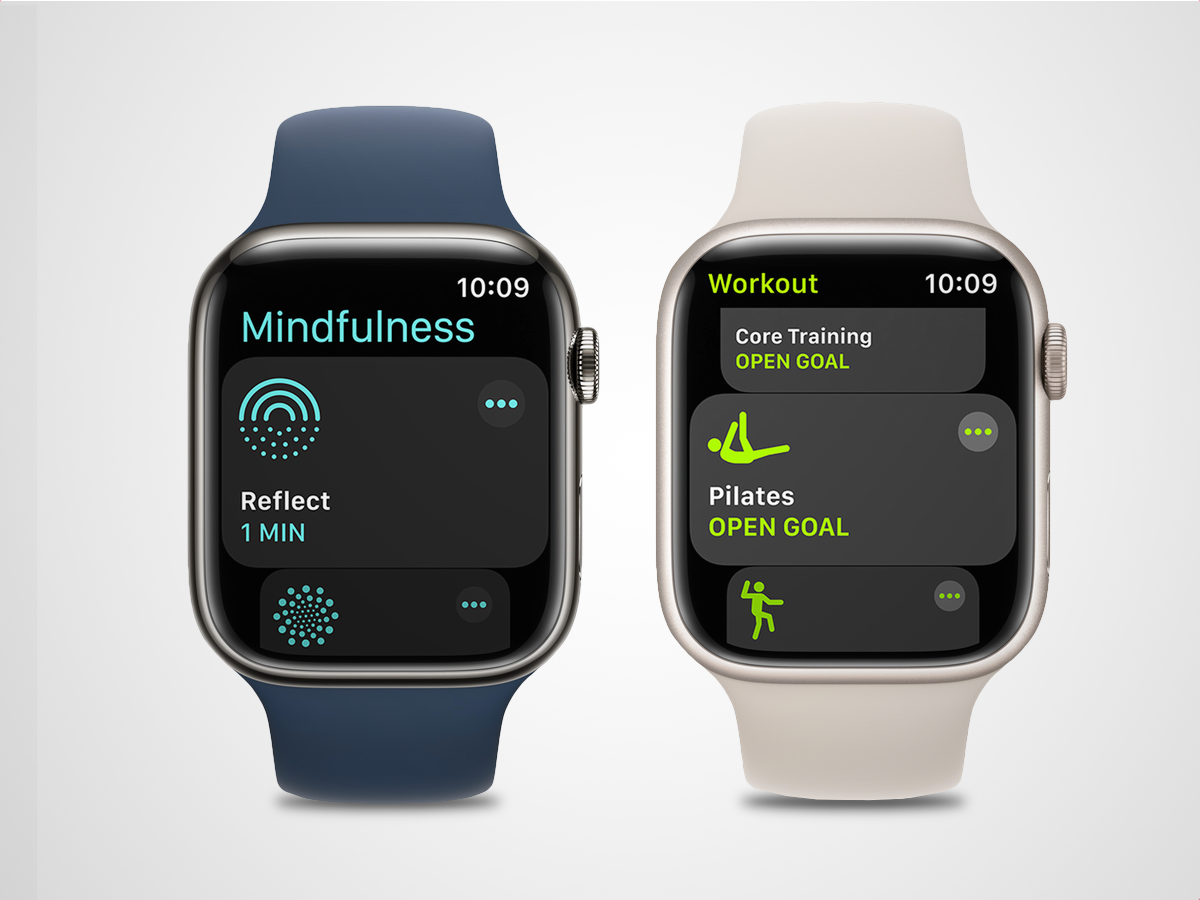
Health and fitness features have long been a feather in the Apple Watch’s cap, but the suite hasn’t received an overhaul for the Series 7. Yes, you get blood oxygen monitoring, anytime access to an ECG (including irregular heart rhythm detection) and in-depth sleep insights. But you also got all of those with the Apple Watch Series 6.
What’s more, many of the new health tools introduced with watchOS 8 won’t be limited to the Series 7. So if you’re already wearing an Apple Watch Series 6, you’ll also benefit from the Reflect feature in the updated Mindfulness app (to centre yourself throughout the day), automatic bike ride detection (including auto-pause and resume), voice feedback during activities and improved fall detection to better recognise if you’ve taken a tumble.
Together with portrait-based watch faces, support for virtual house keys in your Wallet and more seamless smart home control (including device status icons, scene suggestions and easier access to security cameras), watchOS 8 offers plenty of improvements – but few of them require you to upgrade to the Watch Series 7.
It’s a similar story with Apple’s Watch-based workout platform, Fitness+. A paid membership unlocks a range of guided sessions across 11 disciplines – and the whole system is powered by Apple Watch. But it’ll work just as well on the Series 6 as the Series 7.
Initial verdict: should you switch?
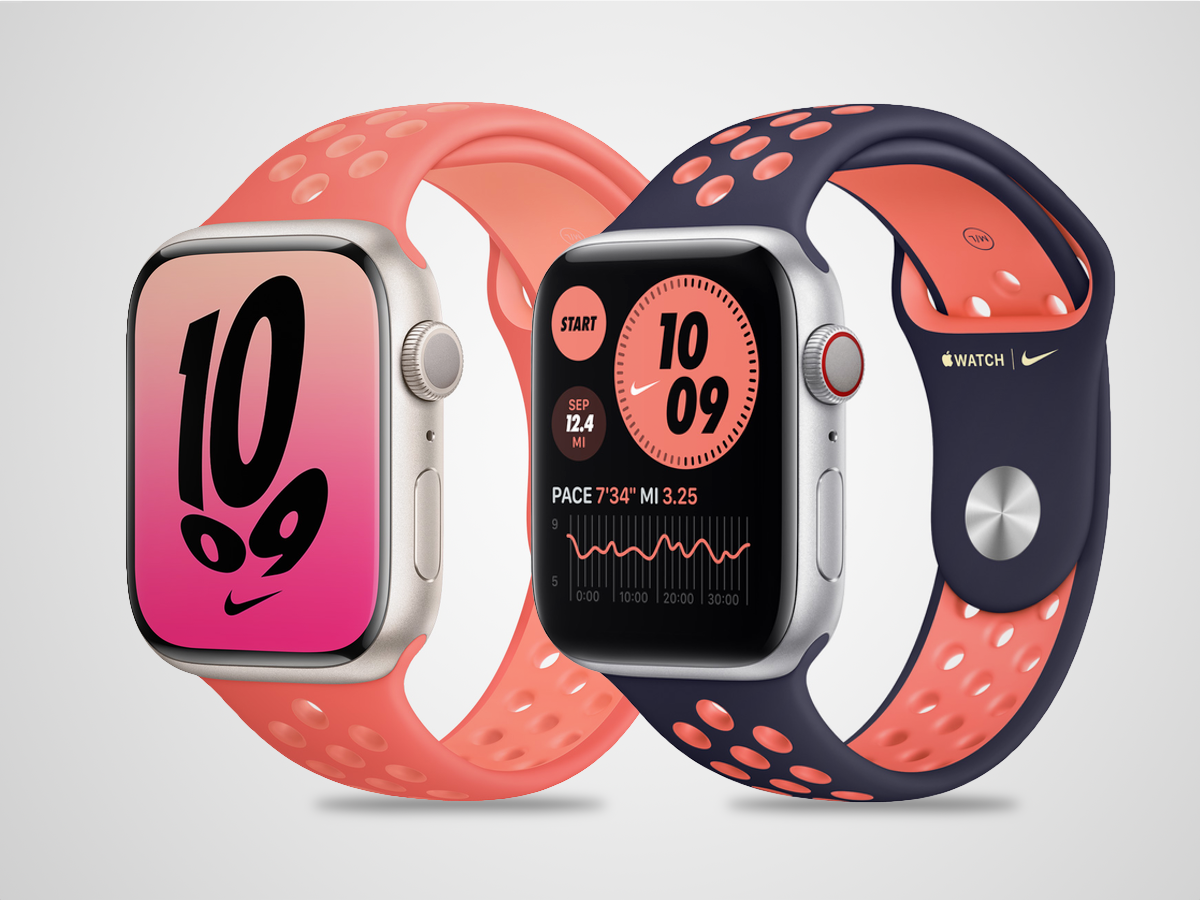
If you already have an Apple Watch Series 6 on your wrist, the Series 7 doesn’t do all that much on paper to justify an upgrade. For many, the fact that Apple didn’t deliver a major design change will be enough to discourage any further thoughts of swapping.
For those who can look past the familiar – albeit slightly reprofiled – shell, the Apple Watch Series 7 does deliver a meaningful increase in screen size. The added real estate should certainly make swiping to type and navigate a lot easier, while fresh faces promise to meaningfully utilise the space and bigger buttons should assist inaccurate tappers.
But the other improvements offered by the Series 7 are relatively minor. Yes, it’s notably quicker to recharge, but the actual battery capacity is the same. And yes, the screen is a lot brighter indoors, but there’s no indication that it’s any sharper than the panel on the Series 6. And with no word on a new processor, everything points towards performance that’s broadly the same.
Most of the significant functional changes found on the Series 7 will be a result of watchOS 8 – and the majority of those updates will also be available to existing users of the Apple Watch Series 6 (and earlier devices).
For first-time buyers, the Series 7 is still a compelling proposition. Starting at £379, it will cost the same as the Series 6 did at launch – and you do get a lot of watch for your money. But for those already equipped with the last-gen Apple Watch, the Series 7 spec sheet presents limited reasons to upgrade. At the very least, it’s worth waiting to see what watchOS 8 adds to your existing ticker – and what we think of the Series 7 in our upcoming review – before making the switch.


